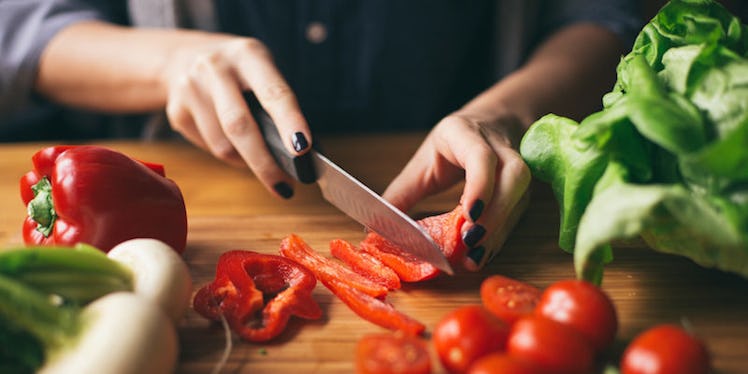I've had a complicated relationship with carbohydrates for most of my life.
I mean, don't get me wrong, my favorite foods on the face of the Earth are carbs. Let's be real, carbs are tasty AF.
However, over the years I've found that my beloved carb-filled snacks always end up being the root cause of my weight-related woes.
Yep, I think it's safe to say that we've all experienced the horror of discovering that nothing fits you besides a fugly pair of sweatpants as a result of your all-carb diet.
If you're looking to do some damage control and lose three pounds, ditching the unhealthy cheese fries for a low-carb diet plan can be a great way to go.
After all, Kim Kardashian serves as living proof that a reduced carb diet like Atkins can actually do wonders for your waistline.
However, cutting carbohydrates can be a bit more complicated than it seems on the surface, so before you go and opt for a low-carb meal plan, it's important to make sure you avoid these simple dieting mistakes.
Don't ditch the carbs completely.
Oftentimes, people confuse low-carb diets with no carb diets. However, carbohydrates are important macronutrients that your body uses as a source of energy to fuel everything from basic cellular functions to physical activities.
Therefore, it's not a good idea to completely nix carbs from your diet plan.
Low-carb diets plans like Atkins recommend eating a diet in which 40 percent of your calories come from carbohydrates.
So if you're eating about 2,000 calories per day, you want to make sure that approximately 800 of those calories are coming from healthy carbs.
Make sure you're eating the "right" carbohydrates.
While foods like fruits, grains, legumes, dairy and vegetables all fall under the umbrella category of carbohydrates, it turns out that not all of these carbs are considered unhealthy.
When it comes to separating the good from the bad, it's helpful to look at each food's position on the Glycemic Index.
If you're not familiar with this, it's basically just a scale that denotes how fast the carbs you consume enter the bloodstream.
Unfortunately, the carbs that tend to be the tastiest, like refined grains and simple sugars found in white bread, baked goods, and processed snacks, all happen to high glycemic "bad carbs" that spike insulin levels and cause weight gain.
Therefore, you'll want to ditch these unhealthy sources of carbohydrates for some complex carbs such as whole grains, legumes and vegetables that enter the blood stream at a slow, steady pace.
Plus, these low glycemic "good carbs" usually tend to be packed full of healthy vitamins as well as fiber that makes you feel full and keeps your hunger at bay.
Keep your portions in check.
It's important to keep in mind that "low carb" and "low calorie" are two completely different things.
Just because you're swapping out the breadsticks and bowls of pasta for low-carb foods doesn't necessarily mean that you are consuming fewer calories.
It's important to keep tabs on the amount of calories you eat throughout the day and be diligent about keeping your portion sizes in check.
At the end of the day, your body needs to be in a calorie deficit in order to lose weight. So if you're eating more calories than you're burning, the scale isn't going to budge.
Citations: The 3 Biggest Mistakes People Make When Going Low-Carb (Popsugar)
